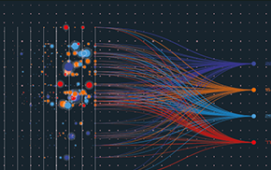Following her appointment as Royal Bank of Canada’s (RBC) new global head of reference data at the end of last year, Julia Sutton has been busy with plans to automate key areas of the bank’s customer data management. Sutton explains that she has been afforded a valuable window of opportunity within RBC to drive forward the data agenda and has begun by extending the automation of calendar data for the firm beyond equities and fixed income.
Sutton joined RBC from Citi, where she was global head of customer accounts with responsibility for maintaining global account data and KYC for capital markets for more than three years. She has put this experience and her 19 years at Barclays Capital to good use in her new role and one of the first projects that she embarked upon was the “quick hit” of tackling RBC’s calendars.
For most firms, calendars are held at country level and may fail to take into account regional differences, as well as any dates that are altered during the course of the year. According to Sutton, last year there were between 70 and 80 regional changes to calendar dates every month. “When I started at RBC, the bank had already automated calendars for equities and fixed income but not for the other parts of the business and this was the first item on my data agenda,” she explains.
The benefits of automating this data are to reduce the number of trading and settlement breaks and allow the firm to better support pricing and yield curves in the market, says Sutton.
Another key focus for the bank is on entity data cleansing, given that the industry remains without a universally agreed business entity identification standard. Sutton is well apprised of the challenge of keeping track of this “living” (rather than static) data and has been working within JWG’s Customer Data Management Group (CDMG) to help define some best practices in this endeavour). She recommends that firms should focus on the basic core data when automating this space: “The core data within this space is name, address, cross references between vendor codes and industrial classifications, anything else is product specific.”
Client onboarding is an area that Sutton has focused upon during her career, especially while she was at Citi and now again at RBC. At Citi, she tackled the centralisation of the bank’s non-standard processes across its regions and various silos. To this end, Sutton is in favour of buying in solutions to tackle the challenges rather than building then from the ground up: “When something is available already, why spend time and money building it again?”
The main challenge at RBC, as at any bank, is to gather this data across siloed business lines so that end customers are not repeatedly asked to provide the same data to different parts of the bank, she explains. The bank is therefore working on an onboarding portal for clients to lodge their documents with RBC and be more responsible for keeping them current.
Issue to issuer data is also on the radar due to the current regulatory focus on this space, continues Sutton. The mapping of bad data to bad data is a real problem for most financial institutions in this space and it requires a great deal of work to sort it all out. “It is a very manual process at the moment and this was the same at BarCap and Citi. At RBC, we have been working with a couple of vendors to automate this process and this should have a huge impact on the amount of data held in our core system,” she elaborates.
Settlement instructions can also pose a significant challenge for financial institutions if the right data controls are not in place, adds Sutton. “The linkage and maintenance of accounts data is very intensive and Omgeo’s Alert is the main provider of standing settlement instructions (SSIs) data. However, Alert only provides 30% of the required data and this means that there is a gap that must be filled by using multiple data vendors and mapping that data,” she explains.
Omgeo is seemingly attempting to tackle some of these challenges by improving Alert with the addition of new data and functionality such as account number capture and, in 2011, entity data mapping.
Subscribe to our newsletter




